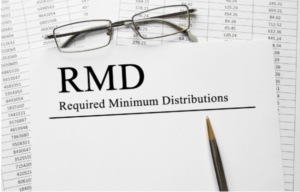401(k) & IRA Law Changes that Can Improve Your Retirement
Key Points
- The SECURE Act 2.0 has presented positive changes to retirement rules and regulations.
- The changes will phase in over a few years, so knowing the year a change is enacted is vital for effective retirement planning.
Many people know they should be saving money for retirement, but do not for many legitimate reasons.
Looking to address the so called “retirement crisis,” Congress recently passed the Secure Act 2.0. which has enacted thoughtful and considerate changes to IRA and 401(k) rules and regulations. They recognized the realities and challenges of saving for retirement while simultaneously supporting oneself and one’s family.
Many of these changes are being phased in over a period of years. This article discusses them chronologically so you will know which updates will affect you now, and which ones will affect you later.

2023
- Congress raised the age for required minimum distributions (RMDs) from 72 to 73. This applies to those turning 72 in 2023. People who turned 72 in 2022 fall under the previous rules of starting RMDs at 72.
- Penalties for failure of taking out RMDs are reduced from 50% of the withdrawal amount to 25%. The percentage falls to 10% if the RMD is taken out by year’s end.
- Employee matches to Roth 401(k)s are now possible, benefiting the employee.
- While not yet functioning, the National 401(k) Registry aims to help employees track down 401(k) plans they may have from different employers throughout their employment history. It will be nationally searchable so plans serviced in different states or employment across the country will not hinder the employee’s ability to find their 401(k).
Takeaways: Changes to the RMD will significantly benefit people who are looking to delay their retirement or who fail to take distributions. Employee matches in 401(k)s and the National 401(k) Registry enable employees to contribute more and track their funds better.

2024
- Surviving spouses of IRA and 401(k) account holders can elect to be viewed as the deceased in regard to taking RMDs. This is of benefit if someone was older than their deceased spouse. It is also an irrevocable decision.
- RMDs no longer apply to Roth 401(k)s, offering more tax benefits to employees.
- The catch-up limit for people over 50 years old will change from a flat $1,000 to instead be indexed to inflation for a possibly greater contribution opportunity.
- Catch-up contributions for higher earners (those earning $145k+ yearly) must be in a Roth format. Thus, the Federal Government receives its taxes sooner while offering tax benefits to near retirees.
- Penalty-free emergency withdrawals from IRAs are available at up to $1,000 a year. This encourages people to save for retirement while reducing “what if I need it” fears.
- Rolling over 529 accounts usually incurs fees. The funds from 529 accounts can now be rolled into the beneficiary’s retirement accounts without penalty. There is a $35,000 lifetime limit. It is also subject to yearly contribution limits, so it may have to be done over several years. The 529 plan also needs to be open for 15 years.
- Changes in eligibility for part-time employees enables them to participate earlier in retirement plans. Their eligibility period has been decreased to two years from three years and one thousand hours. Employees still need to be at least 21-years-old to enroll. Companies, of course, can choose to allow part-time employees to enroll in retirement plans earlier; this simply changes the requirement.
Takeaways: Changes in RMDs and catch-up contributions empower people to have more control over their retirement funds. 529 changes encourage people to contribute to such tax advantaged plans without the concern of the funds not being used. Part-time eligibility opens the retirement savings door earlier for people working part-time.

2025
- The annual catch-up contribution limit for people from ages 60 to 63 will increase to $10,000.
- Employees will automatically be enrolled into newly formed retirement plans. It starts at 3% of the employee’s salary and peaks at 15%. Every year, contributions will increase automatically by 1%.
Takeaways: Near retirees have the ability to catch up and contribute to their retirement funds. Automatic enrollment removes a large step in the process and encourages more employees to enroll. Automatic enrollment, instead of voluntary enrollment, is expected to result in employees contributing $40.5 billion into retirement accounts over a decade.
Conclusion: Let’s Tie It All Together!
While many get nervous from change, but the modifications and initiatives Congress passed in the SECURE Act 2.0 are nothing to fear. They benefit all employees and future retirees, making the journey a little less cumbersome and worrisome.
To learn more about the IRA and 401(k) changes and how it may affect your Self-Directed IRA, contact one of our Madison Trust specialists today.
Disclaimer: All of the information contained in our website is a general discussion for informational purposes only. Madison Trust Company does not provide legal, tax or investment advice. Nothing of the foregoing, or of any other written, electronic, or oral statement or communication by Madison Trust Company or its representatives, is intended to be, or may be relied on as, legal, tax, investment advice, statements, opinions or predictions. Prior to making any investment decisions, please consult with the appropriate legal, tax, and investment professionals for advice.










